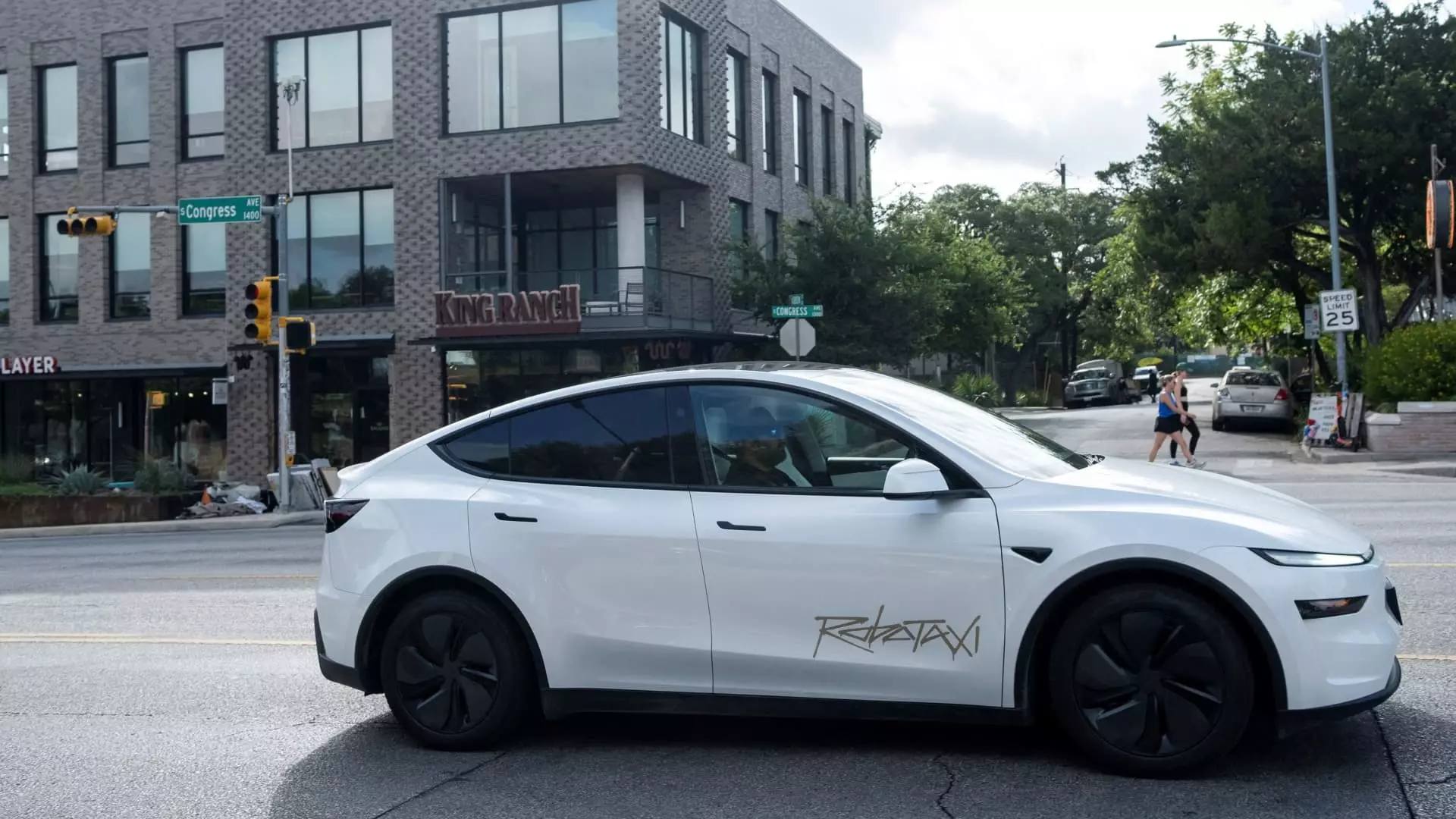The recent launch of Tesla’s robotaxi service in Austin, Texas, has raised serious questions about the automaker’s approach to autonomous driving. Videos circulating on social media showcased alarming behaviors, such as a Tesla robotaxi barreling down the wrong side of the road and erratically braking in traffic to avoid stationary police vehicles. Far from a seamless introduction of cutting-edge technology, this rollout has become emblematic of the risks inherent in rushing innovations to market without adequate oversight. The National Highway Traffic Safety Administration (NHTSA) has stepped in, underscoring that the scrutiny over Tesla’s technology is far from over.
Elon Musk’s Unfulfilled Promises
At the heart of this debacle are Elon Musk’s grandiose promises regarding full vehicle autonomy. Back in 2015, Musk confidently proclaimed that Tesla vehicles would reach full autonomy within three years. Fast forward nearly a decade, and the automaker is struggling to get its robotaxi service off the ground, operating with a limited fleet of Model Y SUVs and reliant on a human safety supervisor in each vehicle. The timeline Musk projected has proven to be not just overly ambitious but patently unrealistic, coloring perceptions of Tesla as a technology leader and raising serious questions about accountability.
The Regulation Gap
Tesla has often operated in a gray area when it comes to regulations. According to the NHTSA, they don’t pre-approve technologies, leaving automakers to certify their own vehicles as compliant with safety standards. This lack of rigorous pre-market oversight allows companies like Tesla to innovate rapidly – a double-edged sword. The ongoing investigations into Tesla’s Full Self-Driving (FSD) Beta systems, following numerous incidents, reveal that regulators may be one step behind in ensuring public safety. For a company eager to lead the future of transportation, this situation presents significant vulnerabilities.
A Host of Competitors
While Tesla contemplates its next moves, industry competitors are quietly and effectively advancing in the autonomous space. Alphabet’s Waymo recently reached a monumental milestone of over 10 million paid rides, concurrently demonstrating the efficacy of their technologies in both regulatory compliance and operational safety. In China, firms like Baidu’s Apollo Go and WeRide have already established commercial robotaxi fleets. These competitors are not only ahead in execution but also in fostering consumer trust, a vital commodity that Tesla desperately needs.
Technology versus Reality
The contrast between Tesla’s technological capabilities and the chaotic reality is stark. The FSD Unsupervised system, designed to be a game-changer, has instead raised alarms about public safety and the reliability of autonomous systems. The mixed reviews from the early access program users—mostly Tesla advocates—cast doubt on whether the technology is genuinely ready for prime time. Excited riders may still be riding the Tesla hype train, but in reality, they are part of a precarious pilot that raises pressing ethical questions about the safety of experimental technologies on public roads.
The Investor Impact
Despite the operational hiccups, Tesla’s stock saw an 8% increase on the day of the robotaxi pilots’ launch. However, such market reactions often reflect speculative enthusiasm rather than tangible accomplishments. Investors are risking their funds based on unfulfilled promises and an increasingly complex regulatory landscape. The focus on short-term financial gains over long-term safety can lead to disastrous results, potentially putting both drivers and stockholders in jeopardy.
The Road Ahead
Tesla’s most recent experience serves as a reminder that the discipline of innovation should not process emergencies or reckless experimentation. As the company seeks to build on its autonomous vehicle technology, it is crucial to balance ambition with accountability. In a world increasingly skeptical of tech-led solutions, profound consideration for public safety and regulatory compliance must be integrated into every innovation step. For Tesla, navigating these turbulent waters will require careful deliberation, not merely a rush to market with flashy promises.

